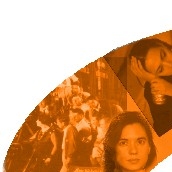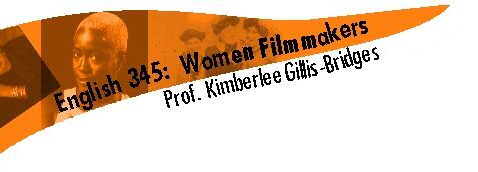


 |
 |
 |
 |
 |
| Course M-TH, 12:00-2:10 More 225 |
| Instructor K. Gillis-Bridges Padelford A305 543-4892 MW, 11:00-11:50 and by appointment |
| Page last updated 6/21/03 |

Presentation Guidelines
- Structure the presentation around an
argument. Begin your analysis with a claim about why the
scene functions as it does--the rest of the presentation should offer
support for your argument.
- All members of the group must take an equal
role in the presentation. Each group member must be
actively involved in discussing the scene and developing an
interpretation. Each group member should speak for roughly the
same amount of time during the presentation.
- Coordinate the presentation with your
partners. Each group member should know what the others will
cover and when they will cover it.
- Remember your audience. What questions,
discussions, and texts will be fresh in their minds? What issues
will interest them? What terms are they
likely to understand immediately? Which will you have to explain in more
depth?
- Make the presentation easy to follow.
Your presentation does not have to follow the chronology of the
scene. Rather, your argument should determine the order of your
points. Effective presentations will sequence information in a
meaningful manner, with each point building upon the previous one and
setting up the next. Regardless of how you structure your
discussion of the scene, you should include basic information: the
scene you will discuss, your argument concerning the scene, the points
you will address, and who will cover each point. Throughout the
presentation, use transitional phrases to signal shifts between ideas.
- Cite references clearly. If you
summarize, paraphrase, or quote from Giannetti or another author, use
signal phrases such as "Mayne persuasively argues.” Such
phrases allow the audience to differentiate your ideas from those of
another critic. When you quote directly from a course author, give
a page number so that audience members may review the source later.
- Speak slowly and loudly. Your
audience only has one chance to hear your presentation.
- Speak from notes. Although you
may worry that nervousness will erase your memory, do not write out
everything you plan to say on paper or on your PowerPoint slides.
Speakers who do so tend to look only at their papers or visual aids, not
their audience.
- Avoid lacing your speech with "um," "uh,"
"like," and "you know." Also refrain from performing the
shifty-footed, hand-wringing dance of the terrified orator.
- Incorporate visual aids effectively.
Whether you use a clip, PowerPoint, transparencies, or a handout, your
visual aids should be readable and have a clear connection to the
presentation. If you use a presentation outline, be sure that the
outline matches your points. If you distribute a handout with key
points and quotations, let the audience know when to look at the
handout. Remember that visual aids help the audience to follow
your points; they do not represent a transcript of your remarks.
You want the audience to listen to you rather than tune you out as they
read a text-heavy visual aid.
- Do your homework and have a backup if you
plan to use technology. Our classroom comes equipped with a
projector, VCR, DVD player, and computer hookup, but you must learn how
the equipment works before you use it. If you use PowerPoint or an
electronic handout, save files in at least two formats (floppy, uploaded
to Dante) and bring a transparency or prepare to write on the board if
the equipment fails. Most of the time, you won’t need to use your
backup plan, but having one will decrease your stress.
- Conclude effectively. Before turning
to questions, end the presentation with a statement that lets the
audience know how the scene advances our thinking about the film. Do not
say, "that’s all" or "we’re done." These statements diminish everything
you have said.
- Ask and answer questions. Formulate
discussion questions that allow the class to expand upon points
introduced in the presentation. Before posing your own questions,
remember to take questions from the audience. To prepare for Q
& A, write a list of questions your audience will likely ask.
Better yet, practice in front of friends and have them question you.
- Have fun. While you need to
advance an interpretation of the scene, the format of the presentation
is up to you. You may debate alternative readings of the scene,
poll audience members during the presentation, perform moments from the
scene to illustrate points, or incorporate other interactive elements
into the presentation.